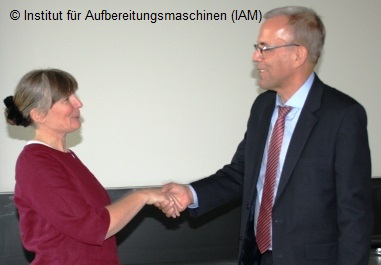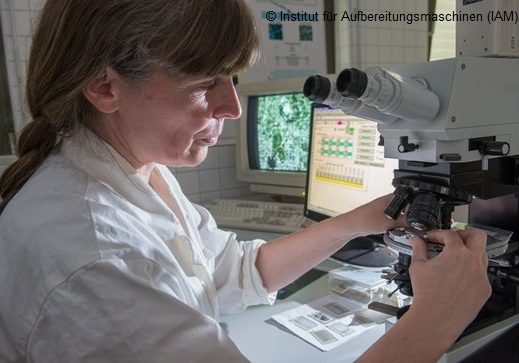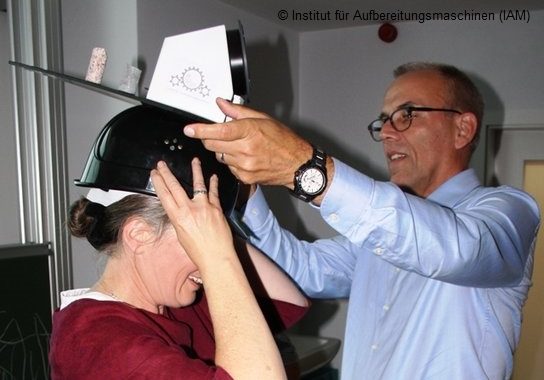Mrs. Sabine Schreiber received her doctorate degree last week on Wednesday at the Institute of Mineral Processing Machines (IAM) of the TU Bergakademie Freiberg

In her PhD thesis on the “Contribution to the quantitative rock characterization for the evaluation of rocks regarding their strenghts”, Mrs. Schreiber has focused on the effects of various structural rock properties – such as their modal, structural and textural characteristics – on their strenghts.
Especially for the modelling of the comminution behavior of solid rocks, a better understanding of the impact of such structural characteristics on frequently used strength parameters such as the uniaxial compressive strength or the shear strength is imperative.
The structural parameters, that are suitable for a quantitative description of the structure of solid rocks, have been determined by Mrs. Schreiber using the method of Quantitative Microstructure Analysis (QMA), that has been specially developed for preparation and comminution processes at the Institute of Mineral Processing Machines.
Based on her findings on these structural rock characteristics, Mrs. Schreiber has devised a model for predicting the point load resistance by describing the parameters of rock strength as a function of the structural parameters determined by means of the QMA. Thus, e.g. the rock strengths of granites can be predicted from the structural rock parameters resulting from the QMA.
In her thesis, Mrs. Schreiber has come to the following conclusions:
- She has noted that the mineral content of rocks does have a significant impact on their strength.
- The rock strength increases with a higher degree of roughness of the mineral grains: The more irregular the grain shape is, the larger is the grain surface, and the more intense is the mutual interlocking of neighboring grain individuals.
- The directional dependence (anisotropy) as well as the clustering represent significant textural microstructural characteristics with respect to the strength parameters of rocks. Hence, directionally dependent anisotropic rocks such as gneiss show distinct differences in strenght according to the load angle to the foliation or the schistosity of the rocks.
- In contrast, the micro hardness (Vickers Hardness Number of Rock / VHNR), mineral fracture toughness, and integral fracture toughness properties of the rocks have not significantly correlated with their strengths.
Congratulations to Mrs. Schreiber for successfully completing her PhD!


